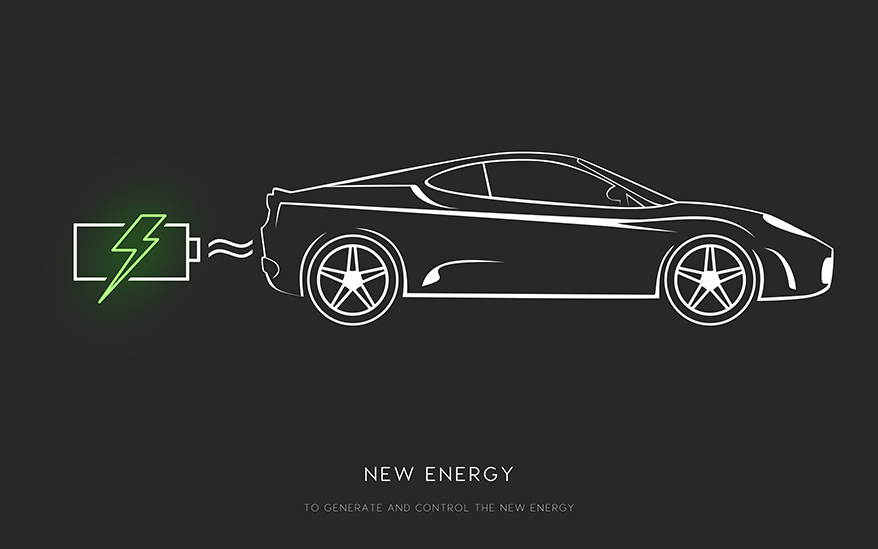Solid Electrolyte Lithium Ion Battery-Definition and Materials
Mar 25, 2020 Pageview:1887
Lithium-ion batteries are used in nearly all modern gadgets and devices. Considering that the safety they offer and the high energy density they are provided with, it is hardly surprising that they are thought to be ideal for electric vehicles and consumer electronics. These batteries are readily available and also offer maximum efficiency. Thus, their popularity is well established despite a few concerns associated with them.
Lithium-ion batteries have four essential components. These include the cathode, which in this case, is lithium oxide. Lithium functions as the active metal in the cell.
The other component is the anode, which is also coated with active metal. The anode makes sure that the electric current flows through the external circuit while also enabling emission and reversible absorption of lithium ions that are released from the cathode. Lithium ions are stored in the anode when the battery is being charged.
Electrolyte serves as the medium through which lithium ions move between anode and cathode. Lastly, there is a separator that functions as a barrier between the anode and cathode to enhance safety. Together, these four components make sure that optimal efficiency is provided by lithium-ion batteries.
However, there are some concerns regarding the safety of lithium batteries as they can catch fire and even explode if overcharged. To deal with this issue, solid electrolytes are now being used in these batteries so that safety can be enhanced.
What is the electrolyte in a lithium-ion battery?
The purpose of electrolyte in a lithium-ion battery is to make sure that the ions have a medium for movement. The lithium ions move between cathode and anode in this medium while electrons move through the wire. This is vital for the use of electricity in the battery. If merely ions flow through the electrolyte, safety can be compromised, and electricity cannot be used.
The electrolyte is the medium which ensures that only the lithium ions move between anode and cathode. Materials having high ionic conductivity are used as electrolytes so that lithium ions are able to move with ease.
Salts, solvent, and additives make up electrolytes. The salts serve as the passage for movement of lithium ions while the solvents are organic liquids that dissolve the salts. The additives are used in a small amount for varying purposes. The electrolytes made with these components do not allow electrons to pass and only allow the movement of ions.
The speed of lithium ions depends on the type of electrolyte used in the battery. Therefore, the electrolyte used has a pivotal role to play in the functioning of the battery, and it is mandatory that it meets the conditions and requirements.
Can lithium-ion battery electrolyte be solid?
Usually, the lithium-ion batteries contain a liquid electrolyte present between the cathode and anode. The cathode and anode are further separated by a thin piece of plastic with pores. When the battery is damaged for any reason, there is a risk of lithium ions piercing the plastic separator. This can result in the electrolyte catching fire.
Scientists tried various tactics to minimize this risk. Fire retardants were added to the electrolyte, and a soft and flammable separator was used. However, what worked most well in reducing the risk of a potential fire was using a solid electrolyte.
While there is no denying that solid electrolytes do reduce the safety concerns associated with lithium batteries, they have some limitations, including heaviness and brittleness. If soft materials are used, the risk of lithium ions piercing the material will persist. On the other hand, if polymer or ceramic is used, while the risk will reduce, the materials are still a bit flammable. Thus, careful consideration is needed to decide on a safe, solid electrolyte for lithium batteries.
An option is to use porous mechanical support along with a fire retardant and polymer electrolyte. This can make sure that the battery does not gain excessive weight and also is not at risk of exploding. Performance is not something that you would have to be worried about.
What solid electrolyte materials for lithium-ion batteries?
Solid electrolytes allow the conduction of lithium ions at room temperature. They are rapidly gaining popularity, and there is a high chance that they would soon replace the organic electrolytes used in these batteries as the latter as toxic and flammable. The safety of the battery is improved significantly.
Solid electrolytes ensure that lithium metal can be used as an anode. This leads to an increase in cell voltage, and thus the energy density of the battery is enhanced.
It is vital to use the solid electrolytes for lithium-ion batteries after careful consideration. Among the various options available, one that has shown immense promise and has acquired attention is sulfide-based solid electrolytes.
The thing is sulfide compounds having high conductivity for lithium ions are not available with ease. Thus, the production of lithium-ion batteries with solid-state electrolyte is limited since the material is challenging to produce.
It is necessary that extensive research is done in the manufacturing of these materials so that the sulfide materials can be manufactured with ease allowing their use in Lit-ion cells. Various companies are trying to produce different compositions of sulfide-based electrolyte materials and other options for solid electrolyte so that the safety concerns surrounding lithium-ion batteries can be dealt with in the most effective manner.
Final words
The effectiveness of lithium-ion batteries cannot be questioned. However, it is necessary that some measures are taken to reduce the safety risks surrounding these batteries. Using solid-based electrolytes can be quite helpful in this regard.
It is necessary that companies take more interest in the development of these materials so that the risk of accidents can be reduced. The research and study of this are still under progress. However, there has been significant progress, and it can be expected that soon enough lithium-ion batteries containing solid-based electrolytes would take over the conventional options. This change will make lithium-ion batteries even more popular and efficient.
Leave Message
Hottest Categories
-
Hottest Industry News
-
Latest Industry News












